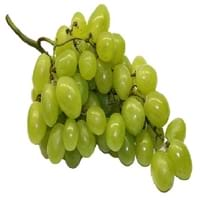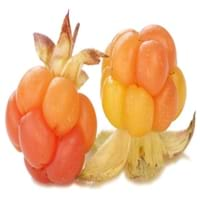Health Benefits
Cancer prevention, Kidney stone treatment, Prevents constipation, Treatment of alzheimer's disease
Cancer prevention, Heart care
General Benefits
Digestive aid, Improves eye vision, Maintains healthy cholesterol level, Treatment of migraine
Anti oxidant properties, Boosts immune system, Digestive aid, Improves blood circulation, Maintains healthy cholesterol level, Strengthens bones
Skin Benefits
Anti-aging benefits, Heals sunburn, Skin rejuvenation, Treatment of dark spots
Anti-aging benefits, Reduces wrinkles, Skin rejuvenation
Hair Benefits
Prevents hair loss, Regulates hair growth, Treatment of dandruff
Protects hair
Allergy Symptoms
Anaphylaxis, Asthma, Breathing difficulty, Coughing, Drop in blood pressure, Hives, Skin rash, Stuffy nose, Swelling of mouth, tongue or lips, Wheezing
NA
Side Effects
Allergic reaction, Skin rash, Might slow down the process of blood clotting
Allergic reaction
Best Time to Eat
As a snack in the late afternoon, Don't consume at night and before bed, Eat the fresh ones, avoid mixing with any other foods, don't eat after meal., Morning time (before lunch)
As a snack in the late afternoon, Don't consume at night and before bed, Eat the fresh ones, avoid mixing with any other foods, don't eat after meal., Morning time (before lunch)
Vitamin A (Retinol)
Not Available
Vitamin B5 (Pantothenic Acid)
Not Available
Vitamin B6 (Pyridoxin)
Not Available
Vitamin B9 (Folic acid)
Not Available
Vitamin C (Ascorbic Acid)
Vitamin E (Tocopherole)
Not Available
Vitamin K (Phyllochinone)
Not Available
Lutein+Zeaxanthin
Not Available
Phytosterol
Not Available
Calories in Fresh Fruit with Peel
Calories in Fresh Fruit without Peel
Not Available
Not Available
Calories in Frozen Form
Not Available
Calories in Dried Form
Not Available
Calories in Canned Form
Not Available
Season
Autumn, Summer
Winter
Varieties
Cabernet Sauvignon, Merlot, Pinot Noir, Syrah/Shiraz and Zinfandel
Not Available
Color
Green, Red
Orange, Pink, Yellow
Inside Color
Light Green
Orange
Taste
Sweet-Sour
Sweet-Sour
Origin
Western Asia, Central Europe
Arctic Tundra
Soil Type
Clay loam, Sandy loam
Loam, Well-drained
Climatic Conditions
Warm
Cold, Warm
Facts about
- If left alone, a grapevine can spread 50 feet and even more.
- There are more than 8,000 varieties of grape worldwide.
- They are available in 7 different colors: red, green, white, black, purple, blue and golden.
- Cloudberry is also called as bakeapple, knotberry , knoutberry, aqpik or low bush salmonberry.
- In Nordic countries, cloudberries are used to make traditional liqueurs.
Top Producer
Spain
Norway
Other Countries
Argentina, Armenia, Australia, Chile, France, Iran, Italy, Portugal, Romania, Turkey, United States of America
Canada, Denmark, Finland, Iceland, Sweden, United States of America
Top Importer
United States of America
Norway
Top Exporter
Chile
Finland
Botanical Name
Vitis vinifera
Rubus chamaemorus
Synonym
Not Available
Not Available
Subkingdom
Tracheobionta
Tracheobionta
Division
Magnoliophyta
Magnoliophyta
Class
Magnoliopsida
Magnoliopsida
Species
Vitis vinifera
R. chamaemorus
Generic Group
Grape
Not Available
Difference Between Grape and Cloudberry
We might think that Grape and Cloudberry are similar with respect to nutritional value and health benefits. But the nutrient content of both fruits is different. Grape and Cloudberry Facts such as their taste, shape, color, and size are also distinct. The difference between Grape and Cloudberry is explained here.
The amount of calories in 100 gm of fresh Grape and Cloudberry with peel is 69.00 kcal and 51.00 kcal and the amount of calories without peel is Not Available and Not Available respectively. Thus, Grape and Cloudberry belong to Low Calorie Fruits and Low Calorie Fruits category.These fruits might or might not differ with respect to their scientific classification. The order of Grape and Cloudberry is Vitales and Rosales respectively. Grape belongs to Vitaceae family and Cloudberry belongs to Rosaceae family. Grape belongs to Vitis genus of Vitis vinifera species and Cloudberry belongs to Rubus genus of R. chamaemorus species. Beings plants, both fruits belong to Plantae Kingdom.









